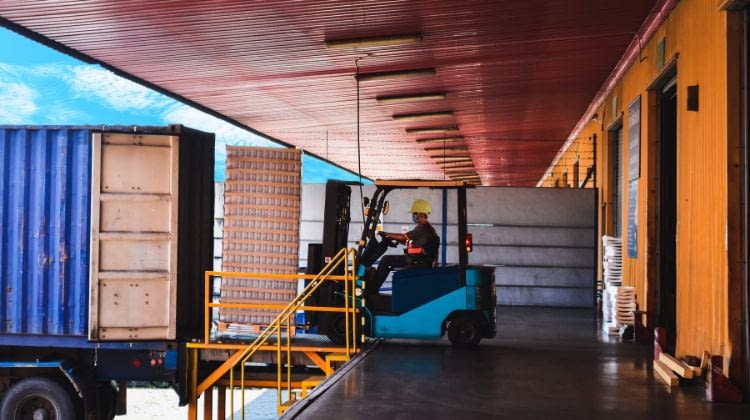
One of the most susceptible locations for workplace hazards in a distribution center is the loading dock. Here, employees load and unload freight in an environment bustling with activity from pedestrians and heavy machinery. Protect yourself and others with these five tips for making your loading dock safer.
1. Use Appropriate Techniques
All employees working on the loading dock should use the appropriate techniques for loading and unloading freight. By following guidelines set by the Occupational Safety and Health Administration (OSHA), you can prevent injuries and damage to goods during material handling and storage. Workers should use their leg muscles rather than back muscles for lifting. And all operators of heavy machinery should follow the lessons from their training sessions to ensure OSHA-compliant practices.
2. Maintain Forklifts
One of the top tips for making your loading dock safer is to maintain all forklifts. As one of the primary pieces of equipment for lifting and transporting materials, it’s important to keep forklifts in optimal condition. Operators should perform pre-shift inspections and pull damaged or malfunctioning forklifts from the rotation until all problems are fixed. It’s also important to water electric forklift batteries and follow the appropriate charging procedures to ensure safe and efficient battery function.
3. Wear PPE
Personal protective equipment (PPE), including hi-vis gear, eye and ear protection, gloves, and anti-skid footwear, protects the worker’s entire body. Hi-vis safety gear makes the wearer stand out from their surroundings, which helps prevent collisions. PPE is important for protecting workers from hazardous conditions at the worksite, and everyone on the loading dock should comply with PPE requirements to reduce the likelihood of injuries.
4. Keep the Site Clean and in Good Condition
Employers and workers should ensure the worksite stays clean to reduce the chance of slips, trips, and falls on the loading dock. Employees should clean up liquid spills and solid debris immediately, and obstructions should be removed from walkways. Damaged or worn-out equipment and materials on the loading dock should be repaired or replaced as soon as possible.
5. Incorporate Safety Features
Material handling processes and equipment evolve regularly, and incorporating advanced safety features into your loading dock is an effective way to boost productivity and safety. Consider your company’s budget and your site’s needs when deciding what to improve. Vehicle restraints to prevent trailer creep, bumpers, and dock levelers are just some of the items you can upgrade at your loading dock to enhance safety.